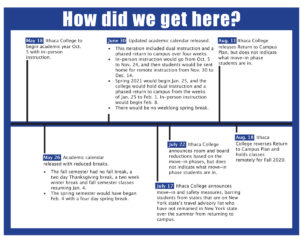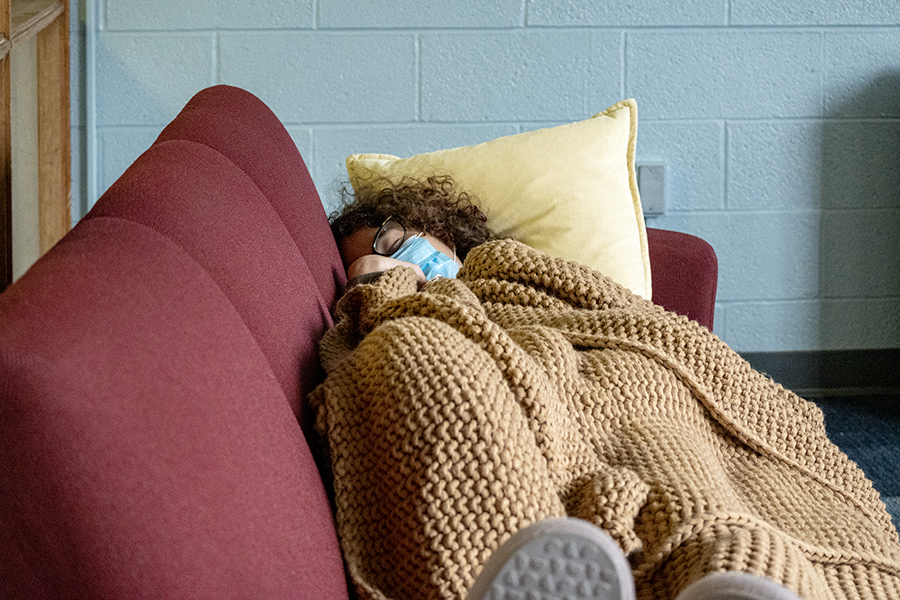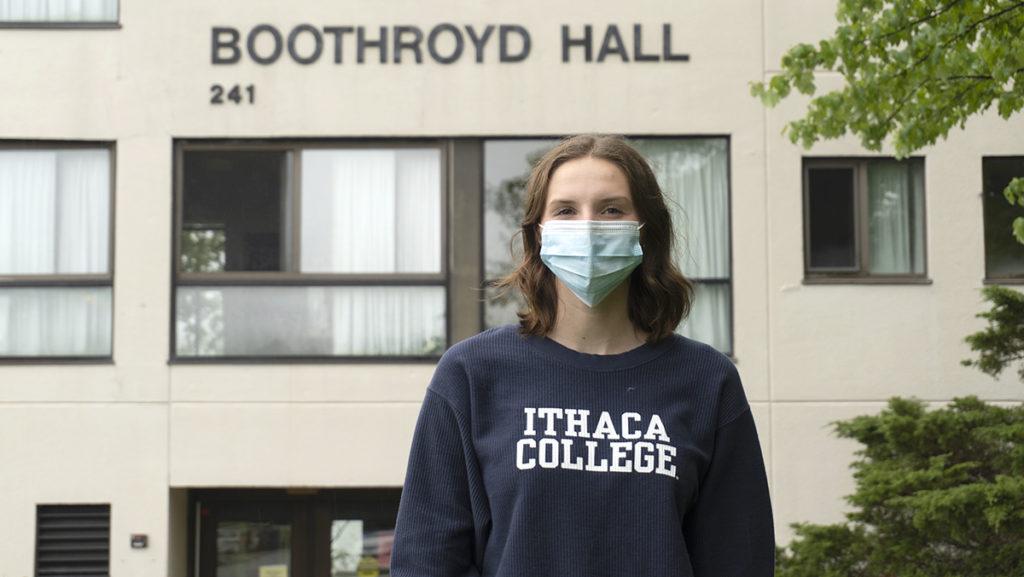Over the past few months, the rapid spread of COVID-19 has forced educational institutions across the country to make changes to their reopening plans for Fall 2020, and Ithaca College was no exception. However, the college’s timing of the announcement and refusal to lower tuition has drawn criticism from some members of the college community.
In May, the college announced that it would open for in-person instruction Oct. 5, with reduced breaks during the academic year. At the end of June, the college released an updated academic calendar with dual instruction beginning Sept. 8 and a phased return to campus before in-person instruction in October. The college released its reopening plan Aug. 11, a document that covered the repopulation of the campus, monitoring the campus community’s health and containment of the coronavirus. Just a week later, President Shirley M. Collado announced Aug. 18 that the college will hold classes remotely for the fall semester.
Much of the criticism has taken place on social media. On the college’s Instagram post announcing its decision to go remote, many of the over 400 comments featured members of the college community voicing their dissatisfaction with the college, with some going as far as to suggest holding a vote of no confidence for Collado.
“We should all vote her [Collado] out with a vote of no confidence,” a comment from user @saigebbess said. “Faculty, the executive board, parents and the students need to come together to make this happen. Very disappointing.”
No confidence votes are held when groups within the college community believe that the president is ineffective in running the college. They are symbolic votes because it is the Ithaca College Board of Trustees that has the power to remove a president from their position. Students held a no confidence vote for former president Tom Rochon after students held protests against racism on campus, and the college community believed that Rochon was unfit to change the campus climate and lead the college.
User @cobybabbitt wrote, “I don’t understand why you would have a full week of orientation, give out room assignments and tell students to ship items to their dorms just to do this a week later.”
“We need … IC to make a decision and stick to it for once,” user @patmansams wrote. “Just last week it was the ‘Return to Campus Plan,’ and now everything is online. I recognize this is a tough decision, but IC leadership has been completely inept and indecisive ever since March.”
Other students reacted with humor to show their disappointment.
“Say sike [right now],” user @jakeplentz commented. “That wasn’t very cash money of you.”
User @ryliemetter wrote, “Now I feel betrayed by both of my presidents.”
Some comments showed support for the college’s decision.
“Thank you for keeping our safety at the forefront of your minds,” user @amurthaa wrote. “Yes, of course it is incredibly upsetting that we are unable to go back. However, I’d rather be incredibly disappointed than sick or even dead.”
“Thank You, @presidentcollado,” user @meggie.megs.vermont commented. “I know this wasn’t an easy decision to make. Thank You for keeping our families safe during this time.”

Dave Maley, director of public relations, said via email that college leadership is required to make difficult decisions that will not satisfy everyone.
“Ultimately, this decision came down to observing the trajectory of the pandemic and the spikes in cases as reopening efforts moved forward at other colleges and universities and the desire to be proactive in prioritizing the health and well-being of our campus community during an unpredictable public health crisis,” Maley said via email. “It was the right and responsible choice for IC.”
Dominoes Falling
The college is not alone in switching from plans for in-person to remote instruction. As of Sept. 10, 78 colleges in the United States have made the same choice for the fall. The California State University system was the first in May to call for remote instruction, approximately two months before other colleges across the country began to shift methods, citing forecasts of a reemergence of the virus in the fall. The majority of the institutions that planned for all-remote instruction throughout July were located in the South and the West Coast, including Spelman College in Atlanta; Scripps College in Claremont, California; and Hampton University in Hampton, Virginia.
Many of these institutions — including those with notably smaller populations than Ithaca College, like Spelman College with 2,097 students and Scripps College with 1,067 students — cited rising numbers of COVID-19 cases in the communities surrounding the campuses as a reason for not bringing students back, as well as concern for contributing to the increase in cases.
“We know that when organizations open too soon, they risk contributing to rapid and tragic spread of the virus,” Scripps College President Lara Tiedens said in a statement. “We are not alone in determining that although the financial consequences may be severe, it is our responsibility to prioritize the health, well-being and safety of our students, faculty, staff and the citizens of Claremont.”
West Chester University in West Chester, Pennsylvania, was the first college in the Northeast to make the call July 10, followed by Simmons University in Boston on July 14. Just four days before Ithaca College made its announcement, Columbia University and Barnard College in New York were the first two institutions in the state to shift to remote instruction.
There were 16,706 students enrolled at West Chester University in Spring 2020. There are 6,089 confirmed positive cases in Chester County, Pennsylvania.
“WCU cannot ignore the potential danger of bringing thousands back to campus,” said Christopher Fiorentino, president of West Chester University, in a statement. “Accordingly, our plans for the fall semester must adjust to this new reality.”
In Ithaca College’s remote instruction announcement Aug. 18, Collado cited the continuing severity of the pandemic as one of the main reasons behind the decision.
“As planning for the fall academic and residential experience continued, it became very clear that, due to the absolutely necessary modifications around things like facilities preparedness and population density, the on-campus experience that our students would have had this semester would ultimately be very different from the IC experience our students would expect and that we would want them to have,” she wrote in the statement.
In Tompkins County, there are 88 active COVID-19 cases as of Sept. 9 and 359 positive cases since the beginning of the pandemic, a number that has spiked since Cornell University students returned to campus last month. There have been three positive cases at Ithaca College since Aug. 14.
Too Late of a Decision?
Senior Connor Shea, president of the Student Governance Council, released a statement Aug. 21 praising the college for making the “safe and responsible decision” but criticized the timing of the decision, just days before the phased move-in process was set to begin.
“It disrupted so many plans,” Shea said. “If this had been in June, it would’ve been a different story. We would’ve said OK,’ and we would’ve had the rest of the summer to plan accordingly. I think it was the right choice to make. The timeline just wasn’t great.”
At the All-Student Gathering on Aug. 19, Collado said that she and the administration waited to make the decision to transition to remote learning to gather as much information as possible about the COVID-19 pandemic.
Junior Leticia Guibunda, who is from Brazil and is the international student senator for the SGC, said the timing of the announcements did not allow for adequate preparation for international students.
“A lot of the important information that would affect the decision-making plans was given too late, I think,” Guibunda said. “So that was one of the things that added to the stress of it all.”
After she arrived in the United States from Brazil on Aug. 15, the college announced its transition to remote learning Aug. 18.
“I came to the U.S. almost for no reason, traveling internationally during a pandemic, having to do so many connections because, at so many airports, the flights were just crazy,” Guibunda said. “Even to book a flight was really long logistics.”
Spelman College made the announcement that it was holding classes remotely June 20, approximately a month before classes were due to begin Aug. 19. Hampton University announced its decision July 1, two months before classes began Sept. 3. Scripps College announced it was holding remote instruction July 8, over a month before classes were set to begin Aug. 24. Columbia University and Barnard College made their announcements Aug. 14, three weeks before classes began Sept. 8.
On the other hand, some institutions that had already brought students back to campus, like the University of North Carolina at Chapel Hill, shifted from in-person to remote classes after just a week of in-person instruction because of a spike in COVID-19 cases on campus.
Ithaca College’s change in plans was closer to the start of classes compared to other institutions but not the latest decision that has been made. The college announced its decision Aug. 18, two weeks before classes began Sept. 8 and 10 days before certain groups of students were going to start moving in.
Calls to Lower Tuition
A petition created by sophomore Khami Auerbach has 297 signatures, and a petition created by junior Meg Marzella has 564 signatures, both calling for the college to reduce its tuition for Fall 2020. Both petitions call for the college to lower its tuition, citing that students do not just pay for their classes, they also pay for access to the Fitness Center, the library, the Writing Center, Park Portable Equipment Center and Services (PPECS), practice rooms and more. The petitions state that because the college is remote, students will not have access to these and therefore should not have to pay for them.
The Pantry — the college’s on-campus food pantry — PPECS, the Center for Counseling and Psychological Services and the Hammond Health Center will be open for students to access. However, the Fitness Center and the library will be closed for in-person use.
Auerbach said that she was not planning to return to campus because she lives in Florida, which is a state on New York state’s travel advisory list. The college had prohibited students from states on the list from returning to campus before it transitioned to fully remote. Nonetheless, she said she was still disappointed.
“It sucks because I love this school,” she said. “I love learning there. I love the professors and all the students I’m friends with and work with. But I feel like the administration is sort of lacking, … especially with communication. I mean we’ve been getting monthly emails, but they were all really long and didn’t address much until recently.”
Auerbach said that she had previously reached out to the college over the summer about the return to campus but never received a response. She said that by making the petition, she was hoping to gain the administration’s attention.
“If we don’t have the option to use the facilities and equipment, we won’t really be getting the same hands-on learning that we normally get and pay for at the school,” Auerbach said. “I think it would be fair to lower tuition just a little bit because it’s really not the same behind a computer.”
She said that she sent the petition to the administration but has not received a reply yet.
Ryan Craig, managing director of University Ventures — an investment firm focused on innovation in higher education — and senior contributor for Forbes, said that many colleges charge tuition and fees not just for classes but for other benefits students receive, like sports, library access, career services and more, in a bundle like those offered by cable companies.
“This year, you’re not getting a bundle at all,” Craig said. “You’re getting one thing, which is remote courses. And you’re being asked to pay a bundled tuition price, and, in many cases, you’re also paying for fees.”
Craig said he thinks that colleges and universities are focusing on retaining funds for the 2021–22 fiscal budget rather than focusing on reducing tuition, a decision that would benefit students.
“I think that most schools would’ve been much better served recognizing that, this year, that what students are paying for is not what they’re getting and not providing a 10% discount, but more like a 50% discount, for essentially remote courses, recognizing that when students pay tuition and fees in a bundle, they’re expecting a rich, immersive, residential experience with 50 additional services,” he said. “And they’re not getting that this year.”
At the All-Student Gathering on Aug. 21, Laurie Koehler, vice president for marketing and enrollment strategy, said that the college will not reduce tuition because if tuition was lowered then financial aid would also have to be decreased. She said that the college is committed to not reducing financial aid for students.
The college has been facing financial issues over the past few years. It has been forced to make budget cuts because of low enrollment for the 2019–20 academic year. At the All-College Gathering on Jan. 28, Collado said that the college needs to change its business model and reexamine its expenses.
Sources at an all-college faculty and staff meeting Aug. 18 said that Bill Guerrero, vice president for finance and administration, said that with the fall semester being held remotely, the college is experiencing an $8 million deficit. If Spring 2021 is online as well, the college will face between a $30 million and $50 million deficit.
“We are still working on a revised budget to be approved with the fall going remote and any other scenarios for the spring,” Guerrero said via email. “Our goal as a residential campus is to be on campus in the spring.”
Barnard College is charging full tuition but will not be increasing its term bill rate for the 2020–21 academic year and is offering a 10% reduction to the comprehensive fee, a charge that covers campus services. Drew University announced that it is reducing tuition to the cost for the 2019–20 academic year and will not increase its tuition. Drexel University is freezing its tuition for Fall 2020 and canceling its tuition increase. Princeton University is decreasing its tuition by 10%.
Other institutions that are not decreasing their tuition — like Brigham Young University–Hawaii and the University of California, Chico — cited ongoing administrative costs, employee salaries and facility repairs as reasons for keeping full tuition.
Ithaca College increased tuition by 2.95% for both the 2020–21 and 2019–20 academic years and increased tuition by 2.55% for the 2018–19 academic year. The tuition price for the following academic year is usually announced in October.
At the Aug. 21 meeting, Koehler said that a tuition reduction is not necessary because faculty members are prepared to teach their courses effectively. Over the summer, faculty members had the opportunity to participate in an institute called Flexible by Design to learn how to utilize technology and teach virtual classes effectively, a course that over 260 faculty members participated in. Fall 2020 classes began Sept. 8.
Shea said that regardless of what the college says about tuition, he thinks that the cost is an issue for students. He said that he and other students are having a hard time believing that virtual classes will be the same experience as in-person classes.
“Do you really think that this digital experience will equate to what it’s like, the energy in the room, opportunities that you have, … the 50 minutes or hour or so that you have that professor in that room with those students?” he said. “You can’t tell me that’s the same experience.”











